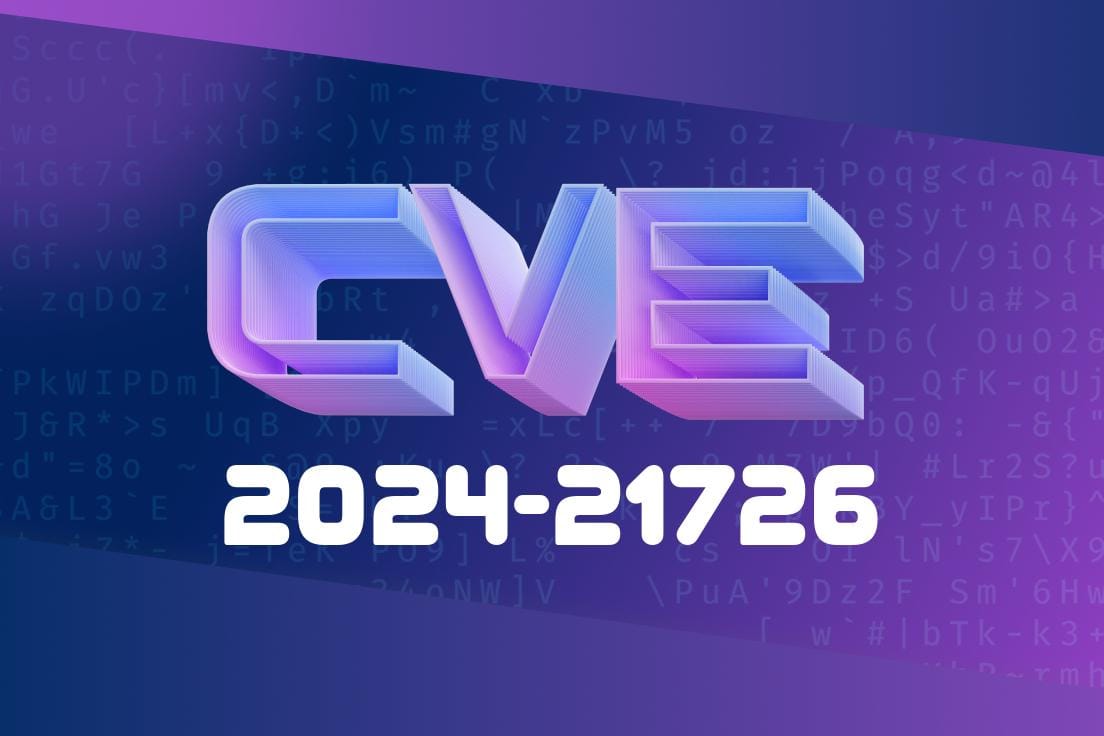Cross-site scripting (XSS) vulnerabilities are a major concern for all web applications and software components, as they can lead to information disclosure, unauthorized access, and potential control of the affected systems by attackers. In this post, we will be discussing the security vulnerability CVE-2024-21726, which is caused by inadequate content filtering in various components, ultimately leading to XSS vulnerabilities.
Description
CVE-2024-21726 is a security vulnerability that affects multiple software components by allowing attackers to inject malicious code into web applications through insufficient content filtering. This vulnerability occurs when the affected components fail to properly analyze user input, opening up the potential for cross-site scripting (XSS) attacks. Attackers can exploit this vulnerability by crafting specially crafted links and user inputs that are then executed on the victim's browser when clicked, granting unauthorized access to confidential information or potentially tampering with software functions.
Exploit Details
To grasp the potential impact of this security vulnerability, let's take a look at a code snippet demonstrating how the inadequate content filtering can lead to an XSS vulnerability. In the following example, the software accepts user input without any proper content filtering:
function displayUserInfo() {
var userName = document.getElementById("username").value;
var email = document.getElementById("email").value;
var userInfo = "<p>User Name: " + userName + "</p><p>Email: " + email + "</p>";
document.getElementById("userinfo").innerHTML = userInfo;
}
An attacker could exploit this vulnerability by crafting a link containing a malicious script payload and sending it to a victim:
http://example.com/userinformation?username=JohnDoe&email=<script>attack_payload</script>;
When the victim clicks on this link, the attacker's payload gets executed, resulting in an XSS attack. The attacker can access sensitive information, manipulate the DOM, or even use further exploits affecting the user or the web application itself.
Mitigation and Recommendations
To address this vulnerability, several steps can be taken to ensure the defective components are adequately filtering their content and avoiding potential XSS attacks:
1. Sanitize user input by encoding special characters that have meaning in the script context. In the previous example, we could use a library like DOMPurify to sanitize the input as follows:
function displayUserInfo() {
var userName = document.getElementById("username").value;
var email = document.getElementById("email").value;
var cleanUsername = DOMPurify.sanitize(userName);
var cleanEmail = DOMPurify.sanitize(email);
var userInfo = "<p>User Name: " + cleanUsername + "</p><p>Email: " + cleanEmail + "</p>";
document.getElementById("userinfo").innerHTML = userInfo;
}
2. Apply proper security headers in your server configuration. By setting the Content-Security-Policy header, you can restrict the sources allowed to load scripts, fonts, images, and other resources, minimizing the risk of XSS attacks.
3. Educate developers on secure coding best practices, ensuring they understand the risks of XSS vulnerabilities and the importance of properly validating user input.
Original References
For more information on the specific components affected by CVE-2024-21726 and updates from the developers working to resolve this vulnerability, please refer to the following resources:
- CVE-2024-21726 - National Vulnerability Database (NVD)
- OWASP Cross-Site Scripting (XSS)
- DOMPurify: A DOM-only, super-fast, uber-tolerant XSS sanitizer
In conclusion, CVE-2024-21726 is a security vulnerability that arises due to inadequate content filtering in various software components, leading to XSS vulnerabilities. It's essential to sanitize user input properly, configure the appropriate security headers, and follow secure coding practices to mitigate such vulnerabilities and protect your application from attacks.
Timeline
Published on: 02/29/2024 01:44:03 UTC
Last modified on: 08/02/2024 04:33:44 UTC
